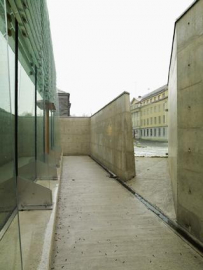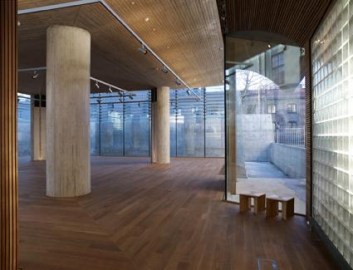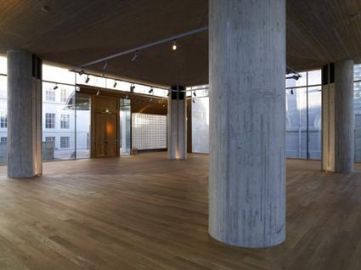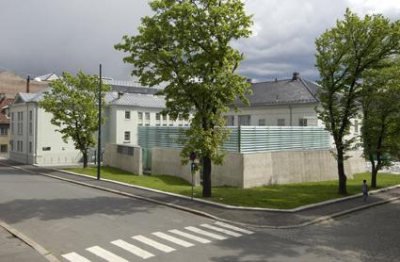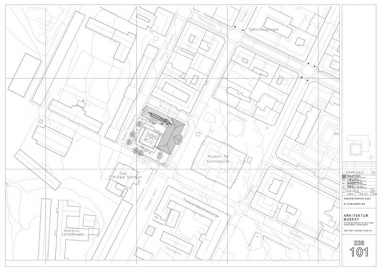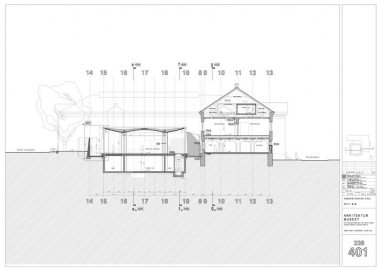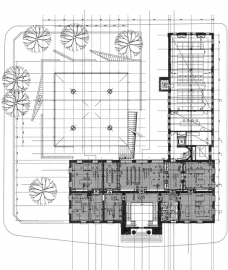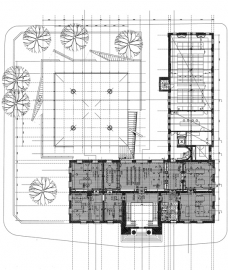National Museum - Architecture
The new Architecture Museum is an extention to one of Norways first monumental Empire Style buildings, designed by Christian Grosch in 1830, and a four-story building that was added in 1910. The buildings had been empty since 1990 and were in great need of repair.
The concept behind the new Exhibition Pavilion was to create an introverted situation with daylight, the sky, and the surrounding vegetation as important elements in the total experience.
The cast on site construction is square in plan with four large columns supporting the slightly curved concrete roof. The facades are glass, blurring the transition between outside and inside. Exterior glass louvers provide for sun screening.
The pavilion is surrounded by concrete walls that expand the experience in the room and act as a quiet backdrop for the exhibitions.
Visitors enter the museum through the original Main entrance in the Grosch Building. All public functions, Reception, Bookstore, Café etc., are located in the Main Hall on the ground floor. The Library and the Administration are located on the second floor. From the Main Hall visitors have access to the Exhibition Pavilion with changing exhibitions, or to the adjacent building with the permanent collection.
The goal for the restoration was to recreate the buildings original character and accentuate the structure to interact with the new elements. The original room sizes have been reestablished when possible.
Focus has been on excellent craftsmanship, using period methods when applicable. Walls are plastered and painted with an oil based paint, stucco lofts have been repaired and reconstructed.
Technical installations were fitted to the existing construction, preserving the architectural language in a satisfying way.
New building materials are mainly concrete, glass, steel, marble and oak.

